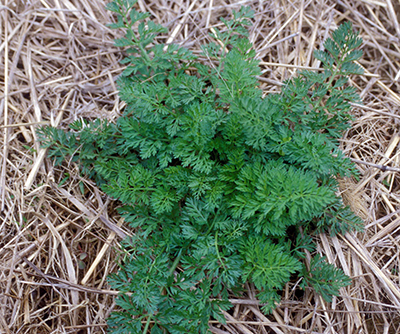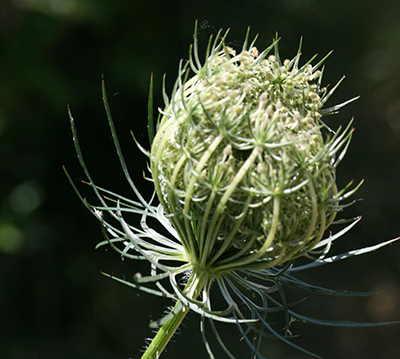Controlling wild carrot in hay fields and pastures
Over time, a wild carrot infestation can become a real problem. Understanding this weed’s biology can help you plan successful control strategies.

Farmers in Michigan’s eastern and western Upper Peninsula have simultaneously noticed a growing problem with wild carrot in hay fields and pastures. This weed is not restricted to perennial forages in far northern Michigan counties. It can also become problematic in perennial forages and no-till cropping systems throughout the state. Fortunately, Michigan State University Extension and other organizations have developed good methods of dealing with the problem.
Wild carrot (Daucus carota), also known as Queen Anne’s lace, is a biennial plant in the parsley family. It germinates and emerges in spring, developing a rosette of delicate, deeply lobed, feathery or fernlike leaves. The foliage is very similar to garden carrots and will smell similar when crushed. Some plants will flower and set seed during the first year of growth, but most will overwinter without flowering. When winter comes, these first year leaves will die back, but the strong taproot overwinters. The second year, plants send up a tall flower stalk and more leaves.

Wild carrot rosette. Photo credit: Ohio State University, Bugwood.org
The flower, called an umbel, is a flat-topped cluster of small, white flowers, 2-5 inches across. Each plant can have several flowers. The flower heads face upward during the day and bend down at night. After fertilization, the flower head folds up and has a “birds nest” appearance. Healthy wild carrot plants can produce as many as 1,000-40,000 seeds per plant, and seeds can live and germinate over a seven-year period or longer.

Closed wild carrot flower. Photo credit: Chris Evans, Illinois Wildlife Action Plan, Bugwood.org
Wild carrot prefers well-drained to dry soils. A few wild carrot plants isn’t much of a problem. They are not considered poisonous, although dairy cow consumption of too much wild carrot will taint milk. However, plant population can build up over time in non-cultivated fields, competing with and replacing desired plants.
MSU recommends the following control strategies for wild carrot.
Biological. Grazing – sheep, horses and cattle will graze wild carrot. Insects including lygus bugs, carrot rust fly maggots and certain nematodes will attack wild carrot.
Mechanical. Tillage will control wild carrot. Rotary hoeing is not effective. Mowing or clipping at late flowering stage reduces wild carrot size and seed production. A single clipping in July has been shown to stop seed production.
Chemical. Herbicide choices for hay and pasture fields are limited. The use of 2,4-D is discouraged in grass hay and pasture because of the widespread occurrence of 2,4-D-resistant plants. Where 2,4-D is effective, the continued use of 2,4-D will lead to a resistance problem in as few as two or three years. Spring applications of labeled herbicides are effective in controlling wild carrot seedlings in other crops. However, once wild carrot becomes established, fall herbicide applications are more effective. Please refer to “MSU Weed Control Guide” (E-434) for herbicide recommendations and “Controlling Wild Carrot” for more specifics.
Herbicide application is probably not the best option for wild carrot control in hay fields and pastures. Careful grazing management and clipping plants before they set seed is likely to be more effective and economical. Keep in mind that viable seed will remain in the soil profile and the problem will take more than a single year to address. When an infestation is too severe, renovating the field should be considered.
More information on wild carrot and its control
- IPM Facts – Controlling Wild Carrot, MSU Extension Bulletin E-2573
- Wild Carrot, Penn State Extension



 Print
Print Email
Email



